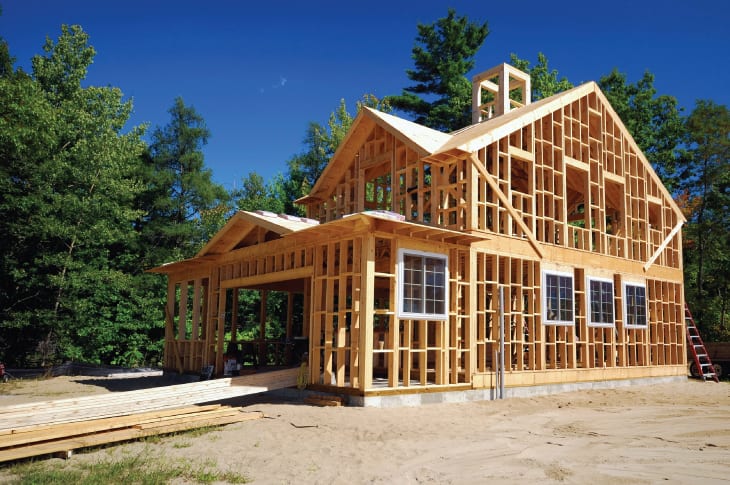11 Key Tips for Selecting Durable Sleepers for Construction Projects
Maintaining small concrete box culverts is crucial for ensuring proper drainage and preventing structural issues. Regular inspections and maintenance can help identify potential problems early, saving time and resources.
In this article, you will discover the eleven helpful and essential tips that will help you maintain the small concrete box culverts safely.
1. Conduct Regular Inspections
Regular inspections are essential for keeping box culverts in good condition. Schedule inspections at least twice a year, ideally in the spring and fall. During these inspections, look for visible cracks or any signs of wear.
When inspecting, bring a checklist that includes items such as checking the inlet and outlet areas, looking for debris accumulation, and assessing the overall structure for stability.
2. Clear Debris and Vegetation
Keeping the culvert free of debris and vegetation is vital for maintaining proper water flow. Remove leaves and other debris from the culvert’s entrance and surrounding areas. Blockages can lead to flooding and additional pressure on the structure, which may cause damage.
Think about establishing a routine for clearing debris, especially after heavy storms or seasonal changes. Doing this simple task can enhance the longevity of the culvert. Additionally, monitor vegetation growth near the culvert and trim back any plants that may obstruct drainage.
3. Monitor for Erosion
Keep in mind that erosion can threaten the integrity of small concrete box culverts. That’s why checking the soil surrounding the culvert for signs of erosion, such as exposed roots or soil washout. If erosion is detected, take steps to reinforce the area immediately to prevent further damage.
On top of that, using erosion control methods, such as planting grass or installing geo-textiles, can help stabilize the soil. This way, it will not protect the culvert but also promote healthy vegetation in the area. Furthermore, addressing erosion promptly can save time and resources in the long run.
4. Repair Cracks Promptly
During inspections, pay close attention to any visible cracks. Small cracks may seem insignificant, but these can expand over time and compromise the structure’s integrity.
Epoxy or polyurethane sealants are effective for filling small cracks. For larger cracks, consider consulting a professional for a more thorough repair. On time action can prevent extensive damage and costly repairs down the line.
5. Ensure Proper Drainage
Proper drainage is essential for the functionality of small concrete box culverts. Ensure that the culvert has a clear path for water to flow in and out.
Always remember that blockages can create back pressure and lead to flooding in nearby areas. Installing effective drainage solutions, like Civilmart sleepers, can support the water management efforts.
Aside from that, you should consider evaluating the drainage system regularly to ensure it is functioning as intended. Adjustments may be necessary to improve water flow.
Moreover, maintaining proper drainage not only protects the culvert but also helps preserve the surrounding environment.
6. Install Silt Fences
Silt fences can be an effective tool for preventing sediment and debris from entering culverts. Install these fences around construction sites or areas prone to erosion. This way, its preventive measure keeps the culvert cleaner and reduces the risk of blockages.
Day-to-day check the condition of silt fences and replace them as needed. ETaking into account this simple addition can make a significant difference in maintaining the integrity of the culvert.
Silt fences are an inexpensive way to safeguard against sediment buildup and promote better drainage.
7. Control Vegetation Growth
While some vegetation can be beneficial, excessive growth can lead to problems. Monitor the area around the culvert for any plants or trees that may encroach on the structure. Seeing roots can damage concrete over time and lead to significant issues.
Remember to plant low-maintenance, shallow-rooted plants to minimize the risk of damage. Regularly trim back any overgrown vegetation to maintain a clear space around the culvert. That is the reason why controlling vegetation growth helps protect the culvert and ensures its functionality.
8. Implement Proper Water Flow Management
Understanding water flow patterns is essential for maintaining culverts effectively. Assess the surrounding landscape to determine how water moves in the area. With this knowledge, it allows for better management of potential flooding and drainage issues.
Plus, implementing proper water flow management techniques can include adjusting grading or installing additional drainage features. Doing these adjustments help direct water away from the culvert, reducing the risk of damage. So, following these proactive approaches to water management promotes the long-term health of the culvert.
9. Document Maintenance Activities
Keeping detailed records of maintenance activities can be invaluable for future reference. Document each inspection, including date and any repairs completed.
Taking notes of this information helps track the culvert’s condition and aids in planning future maintenance efforts. If you have a well-organized maintenance history, it supports decision-making and enhances the management of the culvert.
10. Seek Professional Assistance
While many maintenance tasks can be completed independently, some situations may require professional expertise. If a significant issue arises or if there is uncertainty about a repair, consulting with a qualified engineer or contractor is wise. Professionals can provide valuable insights and solutions for complex problems.
Establish a relationship with local experts who specialize in culvert maintenance. Having trusted professionals available can streamline the process of addressing issues as they arise. Knowing when to seek help can prevent small problems from becoming larger, more costly repairs.
11. Utilize Proper Equipment and Safety Gear
Don’t forget to wear personal protective equipment (PPE) such as gloves and safety goggles during inspections and repairs.
When conducting maintenance, use appropriate tools like shovels and pressure washers to clear debris and inspect the culvert effectively. Having the right equipment on hand makes tasks easier and helps achieve better results, which also ensures that culverts remain in good condition.
Simple Steps for Stronger Culverts!
Maintaining small concrete box culverts is essential for ensuring safe and efficient water management. Always remember that regular inspections, quick repairs, and effective debris management can extend the lifespan of these structures.
By following these ten helpful tips, culvert maintenance can be simplified, leading to improved safety and functionality. Taking proactive steps today will help protect investments and contribute to a safer environment for years to come.







